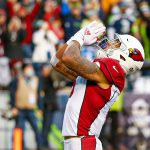Fast bowling is far from an isolated exercise; it’s a massive motor movement, multi-muscle, and multi-joint, akin to the complex mechanics of a tennis swing, baseball pitch, or golf swing.
From the initial run-up to the explosive delivery and controlled follow-through, a fast bowler’s body acts as a kinetic chain, transferring energy seamlessly to propel the ball. Consequently, nearly every muscle group is involved in some capacity.
Some experts even humorously suggest that “all of them except maybe the muscles in the face” are engaged, highlighting the full-body nature of the action.
The Powerhouse Below: Lower Body Dominance
While many observers focus on the arm speed, the true genesis of pace in fast bowling lies in the lower body.
As England’s fast bowler Stuart Broad articulates, “Everyone always sees the ball come out of the hand and thinks you bowl from your shoulder but you really bowl from your legs”.
The legs are paramount for generating speed, momentum, and maintaining balance at the crease during the high-velocity delivery.
Key lower body muscle groups include:
- Glutes (Gluteal Muscles) & Hamstrings: These powerful posterior chain muscles are critical for the run-up and the explosive “drive through the crease”. They are the primary engines for generating horizontal speed and vertical power. The “fast bowlers ass” is a recognized phenomenon, underscoring the importance of strong glutes. Squats, deadlifts, and lunges are highly recommended exercises to strengthen these areas. Stuart Broad himself emphasizes squats for building power in the glutes, quadriceps, and hamstrings, correcting muscle imbalances, and improving stability.
- Quadriceps: Located at the front of the thigh, these muscles work in conjunction with the glutes and hamstrings to provide powerful leg drive and absorb impact. Squats and leg presses are effective for strengthening the quadriceps.
- Calves: These muscles, at the back of the lower leg, are crucial for generating speed and momentum in the run-up. Barefoot running on sand, as popularized by Brett Lee, is a unique way to strengthen calves and core.
The ability to generate immense force from the legs and maintain balance is crucial, especially when dealing with uneven footholds, inclines, or windy conditions.
The Unsung Hero: Core and Back Stability
Often underestimated, core strength is a critical component of fast bowling, playing a pivotal role in stability, power transfer, and perhaps most importantly, injury prevention.
The core and back provide the essential stability for a bowler’s action, ensuring that the kinetic energy generated from the lower body is efficiently transferred through the trunk to the arm and ultimately, the ball.
One expert highlighted experiencing stress fractures in the back during school, attributing it to the back absorbing “all the force of my body through the crease”.
A physiotherapist recommended improving core strength to alleviate this strain, leading to significant improvement.
This underscores the vital role of a strong core in protecting the spine, which absorbs up to 12 times a bowler’s body weight with each delivery.
Exercises for core strength should include a variety of movements beyond just crunches, focusing on all-round stability for the trunk. Brett Lee, for instance, was known for doing 300 crunches a night.
The Delivery Driver: Shoulders, Arms, and Upper Body
While the legs provide the foundation of power, the upper body plays a critical role in translating that power into arm speed and ball release.
- Shoulders: Shoulder work is essential for generating arm speed and maintaining shoulder health. Flexibility through the external rotation of the shoulder is also very important for a fluid and powerful delivery. Strong, healthy shoulders are crucial for resisting the rotational forces generated during the bowling action and preventing injuries.
- Triceps: While biceps and chest may not directly contribute to pace, triceps play a role, particularly in the “throwing” motion of the delivery. However, the primary power for fast bowling doesn’t stem from having “big shoulders” or an oversized upper body.
It’s important to note that while every fast bowler lifts weights, an overly muscular physique isn’t a prerequisite for top-tier pace. Brett Lee, known for his speed, wasn’t a “big fan of lifting” and wasn’t particularly muscular.
Similarly, bowlers like Mohammed Amir, who is “very skinny,” and Daren Gough, who is “very solid,” both bowled at comparable speeds. The key is functional strength that complements a bowler’s unique action and body type.
Beyond Strength: The Pillars of Fast Bowling Performance
While muscular engagement is crucial, it’s part of a larger ecosystem of performance for fast bowlers.
- Action Rhythm and Mechanics: The most critical determinant of fast bowling pace is a bowler’s mechanics and action rhythm. Gaining strength and power will undoubtedly help, but without a technically sound action that efficiently transfers energy, maximum pace will remain elusive. The “right action for you also depends on your body type”.
- Flexibility: Often overlooked in the pursuit of strength, flexibility is paramount. Losing flexibility due to excessive weight training can be detrimental to a bowler’s performance and injury resilience. Stretching, especially after activity, is highly recommended.
- Bowling Frequency: Many experts agree that the most efficient way to develop the relevant muscle groups and improve bowling ability is by bowling frequently in the nets. As one comment suggests, “don’t kill yourself in the gym, kill yourself in the nets if you just want to get better at bowling”. This practical application helps refine mechanics and build sport-specific endurance.
- Injury Prevention and Recovery: Fast bowling places immense stress on the body, with pacemen frequently sustaining injuries. A holistic approach to training must incorporate injury prevention strategies, including strengthening vulnerable areas like the core, proper warm-ups, cool-downs, and adequate recovery. The intensity of impact, where a bowler’s body absorbs up to 12 times its own weight, makes recovery as vital as training.
- Natural Athleticism: For those aspiring to be “exceptionally fast bowlers” like Shoaib Akhtar or Brett Lee, a degree of natural athleticism is often cited as a contributing factor. This can include attributes like fast-twitch muscle fibers, favorable muscle attachment points, and hypermobility in joints, all of which contribute to different aspects of speed and efficiency.
Debunking Myths and Practical Training Advice
The discussions among cricket enthusiasts often feature debates about the role of gym work versus on-field training. Here, we address some common queries and provide clarity:
- “Would I be wrong in doing Chest and triceps at the gym in the morning and then heading to cricket training in the evening?”: While not necessarily “wrong,” it’s likely you would be tired. Training muscles in isolation, like heavy chest and triceps work, might not be the most efficient approach for fast bowling, which is a multi-muscle, multi-joint movement. If you only train once a week, it’s generally advised not to do heavy gym work on your training night. Prioritize full-body, functional movements over isolated muscle groups.
- “Is strength important for fast bowling?”: This is a point of contention in the sources, but the consensus leans towards YES, strength definitely helps pace. While “strength is not important, fitness and action rhythm are” is a viewpoint, it’s quickly countered that “Every top line fast bowler will be doing weights”. The key is the type of strength. It’s not about looking like a bodybuilder; it’s about developing functional strength and power that supports and enhances your bowling action.
- “Do muscles actually prevent you from bowling fast?”: This is a misconception. Being overly bulky or losing flexibility due to muscle gain can hinder performance, but gaining functional strength and power, as discussed, is beneficial. The emphasis should be on dynamic, explosive power and maintaining a full range of motion.
Recommended Training Approach:
Based on expert consensus and the experiences of elite bowlers:
- Prioritize Bowling: Regular, focused bowling in the nets is the most effective way to improve your bowling ability and develop sport-specific muscles.
- Functional Strength Training: Incorporate compound exercises that mimic bowling movements and engage multiple muscle groups.
- Lower Body: Squats (bodyweight or moderate weight for reps to build strength and endurance after bowling sessions), Deadlifts, Lunges, Hamstring Curls, Leg Presses.
- Core: A variety of core exercises for 360-degree stability, not just crunches. Plank variations, medicine ball rotations, and anti-rotation exercises are beneficial.
- Shoulders: Focus on stability and rotator cuff strength to maintain health and support arm speed. Overhead presses (light to moderate), rows, and band work.
- Plyometrics: These explosive exercises (e.g., box jumps, bounds) are excellent for developing fast-twitch muscle fibers and improving power, which is critical for the run-up and delivery.
- Flexibility and Mobility: Integrate a robust stretching routine, especially after activity, to maintain range of motion and prevent injury. Yoga or dynamic stretching can be highly beneficial.
- Listen to Your Body & Seek Expert Advice: Fast bowling is taxing. Pay attention to signs of fatigue or pain. Consulting with a qualified cricket coach, physiotherapist, or strength and conditioning specialist (like those found in groups such as ‘Cricket Strength on Facebook’ or resources like HowToBowlFast.com) is crucial for personalized guidance, injury prevention, and optimizing your training regimen.
Frequently Asked Questions (FAQ)
Q1: What are the absolute most important muscles for fast bowling? A1: While all muscles contribute, the legs (glutes, hamstrings, quadriceps) are crucial for power generation and momentum, and the core/back muscles are paramount for stability and injury prevention. Shoulders are vital for arm speed and health.
Q2: Do I need to lift heavy weights to bowl fast? A2: Not necessarily heavy weights, but consistent weight training focused on functional strength and power is beneficial. The goal isn’t to be overly muscular but to develop power that supports your natural action. Bodyweight squats for reps are suggested after bowling sessions.
Q3: How much does genetics or natural athleticism play a role in fast bowling pace? A3: For exceptionally fast bowlers, natural athleticism, including attributes like fast-twitch muscle fibers, favorable muscle attachment points, and joint hypermobility, can provide an advantage. However, dedication to training, technique, and fitness can significantly improve any bowler’s pace.
Q4: How can I prevent injuries as a fast bowler? A4: Injury prevention is multi-faceted. Key strategies include: strengthening your core to absorb impact, maintaining flexibility, proper warm-ups and cool-downs, listening to your body, and seeking professional guidance for technique and training. Fast bowling puts up to 12 times your body weight through your body, making injury prevention paramount.
Q5: Is it better to focus on gym work or just bowl more? A5: The most effective approach is a combination of both. Bowling frequently refines your action and builds sport-specific endurance. Gym work, focused on functional strength, power, and stability, enhances your physical capacity and resilience, complementing your on-field performance.
Conclusion: A Holistic Approach to Pace
Fast bowling is a testament to the human body’s incredible capacity for power, precision, and endurance.
It demands a holistic approach, integrating not just brute strength but also impeccable technique, foundational core stability, critical flexibility, and intelligent recovery.
By understanding and training the entire kinetic chain—from the powerful drive of the legs to the stable core and explosive arm speed—you can unlock your full potential as a fast bowler.
Remember, the journey to becoming a world-class fast bowler is continuous. It requires dedication, smart training, and a willingness to continually learn and adapt. Focus on building a robust, injury-resistant body that moves efficiently, and let your passion for the game propel you to new speeds.






